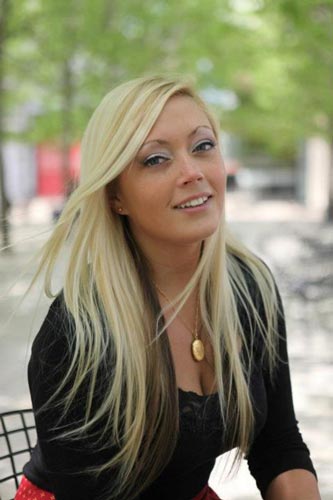

Jillian Petrie is the choreographer for The Growing Stage. Her latest work is with And Then Came Tango. New Jersey Stage caught up with her to learn more about the role dance plays in the story.
How is dance woven into And Then Came Tango?
It is just that, "woven." Dance is an integral part of this play. This makes it quite an exciting production to not only be a part of the creative process, but to watch as well. The movement helps set the tone; without it the play would be very different.
All six male and female performers portraying penguins in our cast are highly trained dancers.
They are onstage the majority of the production. They perform in fully choreographed dance numbers as well as perform shorter movement phrases throughout the play. In addition to the penguins, movement is used by our actors who portray Lily and Walter. Their daily routines become more fluid and choreographed throughout the play. This helps show the passing of time and highlight the unique friendship that bridges the generation gap between the two main characters.
The costumes are brilliant because they do not hinder the performers' movement at all, and help enhance the dancers' performances. The costumes allow the performers room to emote through movement and facial expression, while allowing the audience to fall into the suspension of disbelief and connect to these characters.
Dance is a universal language; it is showcased and utilized beautifully in this production. Not only are the dancers breathing life into these penguins, but the actors portraying Lily and Walter show their friendship grow with the use of choreographed movement throughout the production.
Is the dancing at Growing Stage based on any previous performances or completely new?
The movement at The Growing Stage is completely new for this world premiere! I am very excited about the opportunity to bring modern dance to this play. In my dance career, my experience choreographing concert dance and choreographing theatre have felt like two separate worlds. This piece will be the first that I have had the honor of bridging the gap between the two in a very rewarding way.
What was your inspiration?
I always start a new project from the ground up. My launch point for this was, of course, the chinstrap penguins. I spent a lot of time observing them and from that I pulled about ten literal movements from their behaviors. Be it a head shake or their posture. From there I go into the studio and build off of the movement to create a dance phrase... "yes and." The dance is modern, unpretentious, and has a very grounded nature to it.
I always pull inspiration from my time dancing in London. There is the constant balance of honoring technique and pushing movement forward in this art form. For this piece in particular, I am inspired by the narrative ballet structure where the music has to come first. I think in the same way that a composer has to find a musical language to describe each character, similarly I have to do that with the movement. Movement is the way these penguins communicate who they are and express their emotions without recourse to words at all.
Do you see the choreography as something that helps elevate Growing Stage to more of an art form rather than just theatre for children?
What makes The Growing Stage unique is that we view children's theatre as an art form. I believe adding dance and movement to any production will elevate a piece. However, I do not view theatre for young audiences as any less of an art form. There is a misconception that family appropriate theatre is a lesser version of theatre. When in reality, it is the perfect platform to produce pieces of real substance such as And Then Came Tango.
originally published: 2015-02-22 11:05:03
No comments:
Post a Comment